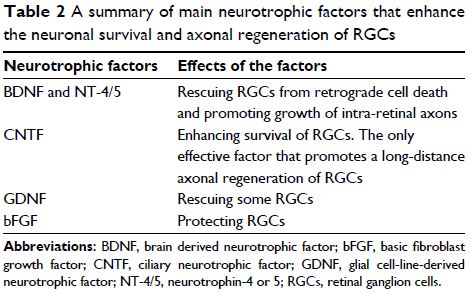9 7 2 2 7
论文已发表
注册即可获取德孚的最新动态
IF 收录期刊
- 3.3 Breast Cancer (Dove Med Press)
- 3.4 Clin Epidemiol
- 2.5 Cancer Manag Res
- 2.9 Infect Drug Resist
- 3.5 Clin Interv Aging
- 4.7 Drug Des Dev Ther
- 2.7 Int J Chronic Obstr
- 6.6 Int J Nanomed
- 2.5 Int J Women's Health
- 2.5 Neuropsych Dis Treat
- 2.7 OncoTargets Ther
- 2.0 Patient Prefer Adher
- 2.3 Ther Clin Risk Manag
- 2.5 J Pain Res
- 2.8 Diabet Metab Synd Ob
- 2.8 Psychol Res Behav Ma
- 3.0 Nat Sci Sleep
- 1.8 Pharmgenomics Pers Med
- 2.7 Risk Manag Healthc Policy
- 4.2 J Inflamm Res
- 2.1 Int J Gen Med
- 4.2 J Hepatocell Carcinoma
- 3.7 J Asthma Allergy
- 1.9 Clin Cosmet Investig Dermatol
- 2.7 J Multidiscip Healthc

视神经病变恢复
Authors You SW, Wu MM, Kuang F, Cho KS, So KF
Received 25 August 2016
Accepted for publication 7 November 2016
Published 15 March 2017 Volume 2017:5 Pages 59—72
DOI https://doi.org/10.2147/JN.S120640
Checked for plagiarism Yes
Review by Single-blind
Peer reviewers approved by Dr Amy Norman
Peer reviewer comments 2
Editor who approved publication: Prof. Dr. Hongyun Huang
Abstract: Optic neuropathy refers to disorders involving the optic
nerve (ON). Any damage to ON or ON-deriving neurons, the retinal ganglion cells
(RGCs), may lead to the breakdown of the optical signal transmission from the
eye to the brain, thus resulting in a partial or complete vision loss. The
causes of optic neuropathy include trauma, ischemia, inflammation, compression,
infiltration, and mitochondrial damages. ON injuries include primary and
secondary injuries. During these injury phases, various factors orchestrate
injured axons to die back and become unable to regenerate, and these factors
could be divided into two categories: extrinsic and intrinsic. Extrinsic
inhibitory factors refer to the environmental conditions that influence the
regeneration of injured axons. The presence of myelin inhibitors and glial
scar, lack of neurotrophic factors, and inflammation mediated by injury are
regarded as these extrinsic factors. Extrinsic factors need to trigger the
intracellular signals to exert inhibitory effect. Proper regulation of these
intracellular signals has been shown to be beneficial to ON regeneration.
Intrinsic factors of RGCs are the pivotal reasons that inhibit ON regeneration
and are closely linked with extrinsic factors. Intracellular cyclic adenosine
monophosphate (cAMP) and calcium levels affect axon guidance and growth cone
response to guidance molecules. Many genes, such as Bcl-2 , PTEN , and mTOR , are crucial
in cell proliferation, axon guidance, and growth during development, and play
important roles in the regeneration and extension of RGC axons. With transgenic
mice and related gene regulations, robust regeneration of RGC axons has been
observed after ON injury in laboratories. Although various means of
experimental treatments such as cell transplantation and gene therapy have
achieved significant progress in neuronal survival, axonal regeneration, and
restoration of the visual function after ON injury, many unresolved scientific
problems still exist for their clinical applications. Therefore, we still need
to overcome hurdles before developing effective therapy to treat optic
neuropathy diseases in patients.
Keywords: retinal ganglion cells, optic nerve
injury, neuronal survival, axonal regeneration, vision restoration
